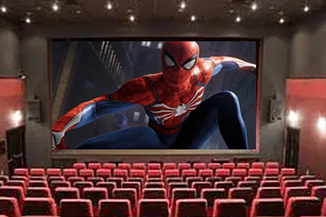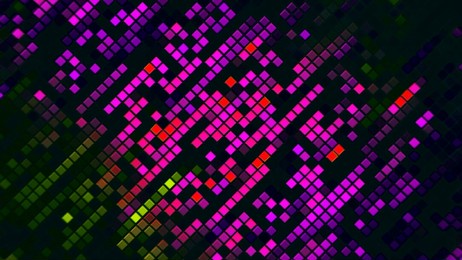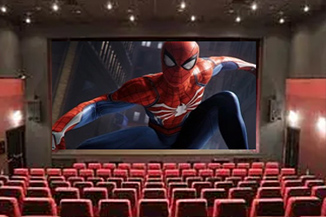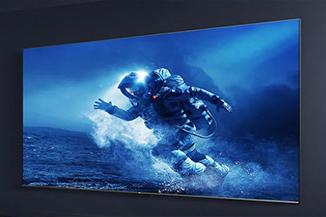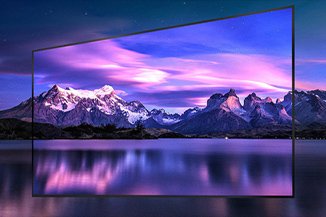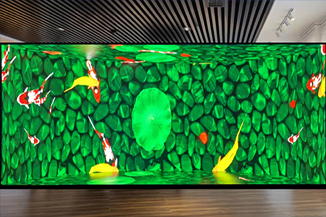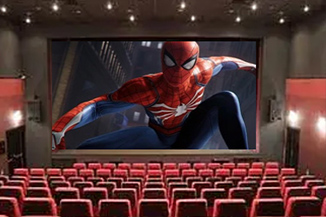Publisher: Supplier of LED Display Time: 2022-10-10 17:43 Views: 1549
Undoubtedly, the Micro LED transfer process is crucial in the production process of Micro LED displays, and it can even be said to be the most challenging part of the entire process. Why do you say that? Next, the editor of Liancheng will discuss this topic with you.
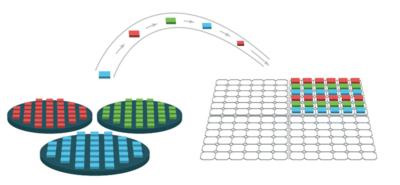
(Image source: microled-info)
This stage involves wafers carrying Micro LED chips, and display substrates with backplane TFTs on top. And in this extremely challenging process, there are three main challenges - accuracy, speed and reliability.
Note that the process is more complicated if the display is based on an RGB Micro LED device - which is why many Micro LED manufacturers use blue LEDs with color conversion capabilities.
1) Accuracy. Because Micro LED chips are so small, they must be placed in the right place, and there is little room for error.
2) Speed. Many displays today have very high resolutions - even smartphone displays are close to 4K resolution. 4K displays use more than 24 million subpixels. Even with mass transfer tools, this remains a challenge because the display industry needs to rely on fast and cost-effective production to achieve low costs.
3) Reliability. In the current LCD and OLED industry, manufacturers manage to achieve extremely high yields, and as display resolutions and sizes increase, yield becomes more critical. Questions about Micro LED yield will be discussed below.
Faced with such a complex process, several different technical routes have been born over the past few years. Most LED screen companies seem to be focusing on stamp-based processes. There are several ways to develop stamps that can pick up, hold, move and release Micro LEDs, such as using van der Waals forces, using electrostatic charges, using magnetism, adhesives, etc. Some companies are finding new ways to implement the pick-and-place process—using fluidic assembly or photochemical polymers. We detail all public transfer process techniques below.
Some researchers classify the transfer process as follows:
(1) Seal pick and place
(2) Self-assembly
(3) Selective release
(4) Roll printing
The transfer process needs to do more than just transfer the LEDs as-is. One problem is pitch (also known as pitch expansion)—the Micro LEDs in the source die are packaged together, close to each other—but on the final display, they need to be spaced apart (by an amount that depends on the pixel pitch of the display). Additionally, as we'll detail below, defects in the epiwafer production stage (which are difficult to completely eliminate) mean that some LEDs have to be skipped entirely.
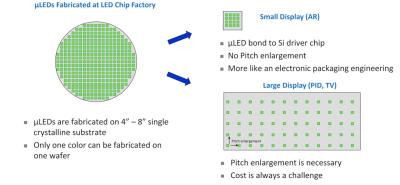
Pitch requirements for Micro LEDs (Image source: eLux)
The basic transfer process transfers the LEDs directly from the original wafer to the display substrate. However, some processes use an intermediate substrate (also called an interposer). This may have several benefits, for example, defective LEDs can be resolved, LED spacing can be enforced, etc.
1. Yield, inspection and maintenance
Unlike early LCD monitors, today's consumers won't accept even a single faulty pixel in a monitor (let alone a high-end monitor based on new technology). Since the production process is never 100% fault-free, the yield of display production is critical to efficient and satisfactory production.
In the Micro LED display process, there are two main points that need to be checked.
The first is during the Micro LED production process – after the epiwafer stage and after the chip processing stage, it is critical to test the Micro LED chips for defects and quality.
The second major inspection phase follows the transfer process, which can also lead to chip damage. After this step, defective LEDs may need to be repaired. Some Micro LED transfer technology developers have integrated inspection and repair processes in the transfer process, which seems to be an important advantage. Yield loss may be the biggest headwind for low-cost Micro LED production, according to some industry experts.
Micro LED displays may contain millions of individual LEDs. 4K displays have over 24 million subpixels, while 8K displays have around 100 million. This means that even at very high yields, defective LEDs cannot be avoided. At 99.99999% yield, each 4K display will contain about 2 defective LEDs. This means that some fix solutions have to be implemented.
2. Micro LED production without transfer
Because the pick-and-place process is extremely challenging, Micro LED production processes that do not require this step have come into the limelight.
For example, US-based iBeam Materials has developed an ion beam-based technology for crystalline alignment of thin layers on various large-area substrates, including thin and flexible large-area metal foils. This technique can be used to produce Micro LED devices directly on large-area flexible substrates. In September 2019, iBeam announced that it had secured Samsung Ventures to accelerate its Micro LED development. This technology is still in a very early stage, and it is expected that this technology or other technologies will be further matured and commercialized in the future.
Source: Projection Times

